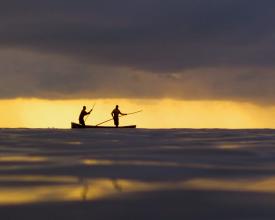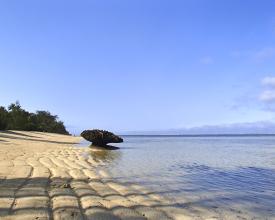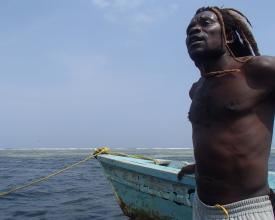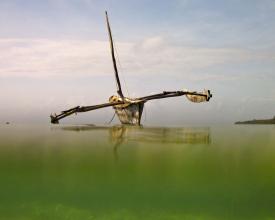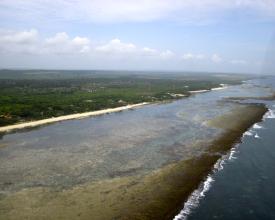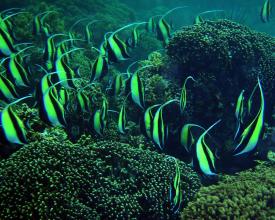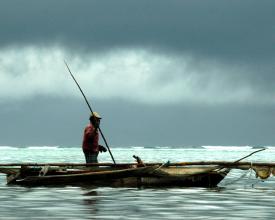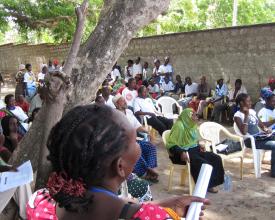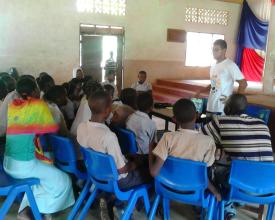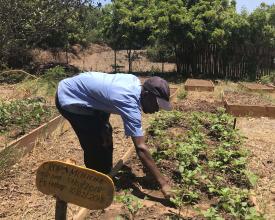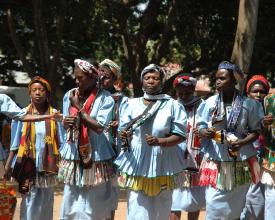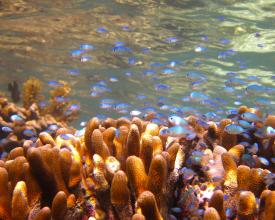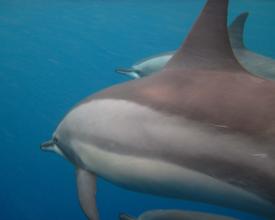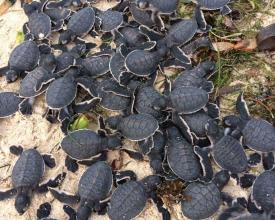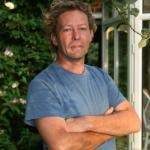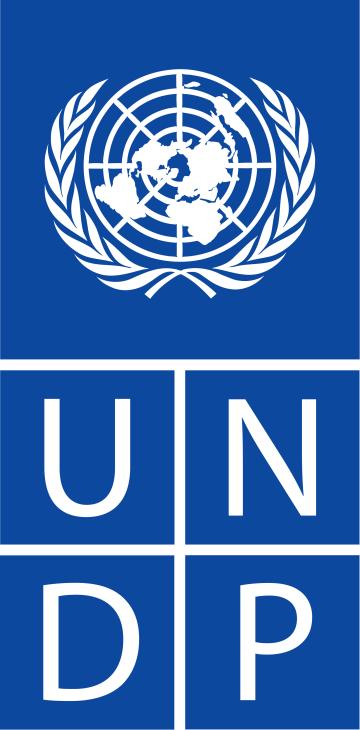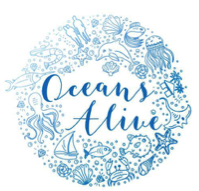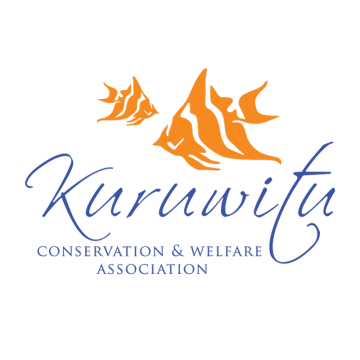
Conservación marina comunitaria. El inicio del movimiento de zonas marinas gestionadas localmente en Kenia en respuesta a la disminución de peces en Kuruwitu, en la costa norte de Kenia.
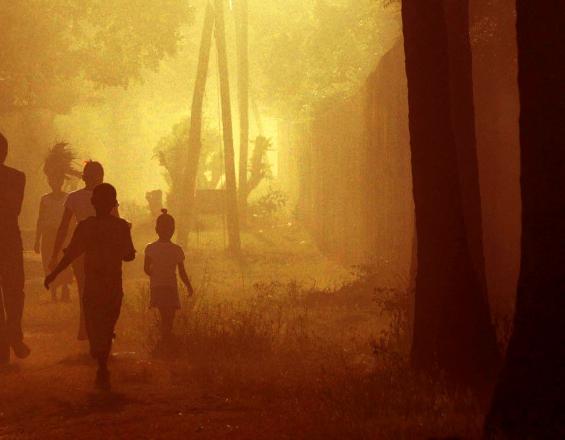
La Kuruwitu Conservation and Welfare Association (KCWA) fue creada en 2003 por miembros de la comunidad preocupados por la degradación de sus mares. Había que abordar la sobrepesca y los efectos del cambio climático antes de que el ecosistema marino sufriera daños irreparables. Pescadores y residentes preocupados que recordaban lo sano y productivo que había sido el mar en el pasado consideraron necesario actuar antes de que fuera demasiado tarde. En 2005 dieron el paso sin precedentes de crear una Zona Marina Protegida (ZMP) de 30 hectáreas. Fue la primera Zona Marina Localmente Gestionada (LMMA) de Kenia basada en el coral. Doce años después, la zona se ha recuperado notablemente. Al prohibirse la pesca en la AMP, los peces han aumentado en abundancia, tamaño y diversidad. Las capturas han mejorado y se han introducido empresas alternativas generadoras de ingresos. Kuruwitu se ha convertido en un modelo de conservación marina sostenible. La KCWA comparte sus conocimientos con otras comunidades costeras locales y regionales.
Contexto
Défis à relever
Kuruwitu es sobre todo una comunidad pesquera de subsistencia y depende de los recursos marinos locales para su sustento. El aumento de la población hizo que hubiera más pescadores en la zona, lo que provocó la sobrepesca. La desesperación hizo que se capturaran peces más pequeños, a menudo con técnicas de pesca insostenibles. Las capturas más pequeñas provocaron una reducción de los ingresos de una comunidad ya empobrecida que carecía de otras habilidades aparte de la pesca. Los caladeros se volvieron insostenibles y los pescadores dejaron de poder alimentar a sus familias, lo que provocó un aumento de la delincuencia. Uno de los retos más importantes fue conseguir que la mayoría de los pescadores se unieran y comprendieran que el cierre les beneficiaría a largo plazo. Para lograr una pesca sostenible era necesario abordar el problema de las redes ilegales. Se necesitaban fondos para sustituir las redes y poner en marcha empresas alternativas. Esto era difícil con un proyecto nuevo y no probado. También había que abordar la caza furtiva de la minoría.
Ubicación
Procesar
Resumen del proceso
Aunque la creación de una AMP es complicada y depende de muchos factores interactivos, hay tres ingredientes principales que deben estar presentes en todo momento: el marco jurídico, la gestión y la implicación y el beneficio de la comunidad. Todos ellos están relacionados y deben funcionar por separado y al unísono. Es necesario un marco institucional con requisitos legales y procedimientos de gestión para crear una base sólida. Para que la conservación funcione en zonas donde hay pobreza, tiene que haber un componente de bienestar.
Bloques de construcción
Área marina protegida (AMP)
El reconocimiento por parte de la comunidad de que era necesario actuar para mejorar las menguantes poblaciones de peces fue seguido de la identificación de diversas partes interesadas para ayudarnos a alcanzar nuestros objetivos. Se pusieron en marcha programas de comunicación, divulgación y concienciación, y en 2004 se realizó una visita a un proyecto similar en Tanzania, que animó a la comunidad a utilizar los recursos marinos locales de forma sostenible.
Se acordó democráticamente el cierre de una zona de lagunas. Se establecieron marcos jurídicos y políticos, y en 2006 se aprobó la primera LMMA de Kenia en el marco de la Autoridad Nacional de Gestión Medioambiental. A raíz de ello, ha surgido un modelo de gobernanza colaborativa en el marco de las Unidades de Gestión de Playas (BMU), en el que pescadores y gobierno trabajan juntos en pro de la pesca sostenible y la mejora de los medios de vida. Para crear la AMP, pasamos por varias fases: conceptualización, inicio, aplicación, supervisión, gestión y gestión adaptativa continua.
Factores facilitadores
La toma de conciencia por parte de la comunidad de que se avecinaba una crisis importante y la determinación de actuar por el bien de las generaciones futuras fue un factor crucial en el proceso de aplicación. La confianza y la fe en un resultado positivo fueron primordiales. La financiación inicial de empresas alternativas y el apoyo de socios clave fueron necesarios para las capacidades técnicas y de asesoramiento. Se eligió una zona con un buen potencial de recuperación, con la ayuda de un científico que había vigilado previamente esa parte de la costa y los conocimientos locales.
Lección aprendida
Desde el principio, es fundamental contar con una estrategia y un plan de gestión claros, elaborados con la máxima participación de los miembros de la comunidad. Escuchar a los ancianos de la comunidad crea un vínculo esencial entre el pasado y el presente. Los objetivos y metas deben ser alcanzables y hay que fijar y cumplir plazos claros para mantener el apoyo de la comunidad. Es necesario que toda la comunidad se beneficie del proyecto y que los medios de subsistencia mejoren de forma tangible para mantener el apoyo y crear un sentimiento de propiedad que dé longevidad al proyecto. El bienestar de la comunidad debe formar parte de la estrategia. Hay que mantener la concienciación, la educación y el intercambio de información, y es vital la voluntad de adoptar un enfoque de gestión adaptable. Aprender de los errores, compartir conocimientos y crear alianzas estrechas con otras organizaciones similares ayuda a que el proyecto avance rápidamente. Crear asociaciones de colaboración y seguir procedimientos claros y directrices legislativas refuerza la estructura de cualquier entidad. Una buena gobernanza desde el principio, con unos estatutos claros que se respeten en todo momento.
Marco institucional, requisitos legales y gestión
Desde que la KCWA inició la primera AMP en Kenia, la política que regula el reconocimiento de un Área Marina Localmente Gestionada no estaba clara. La KCWA involucró a otras partes interesadas, como la East African Wildlife Society, que ayudó con los marcos jurídicos y la defensa de políticas. El reconocimiento de esta zona por parte de la Autoridad Nacional de Gestión Medioambiental (NEMA) garantizó los derechos de los pescadores a gestionar su zona y allanó el camino para los otros 20 proyectos comunitarios que han surgido tras el movimiento de la KCWA.
Esta nueva legislación reconoció el esfuerzo de los pescadores por un modelo de gobernanza colaborativa para la gestión del territorio marino. Se elaboró un plan de gestión adaptable de 5 años basado en el conocimiento local de la zona con la ayuda de otros socios estratégicos. Las normas y la gobernanza del proyecto se plasmaron en un documento de constitución.
Factores facilitadores
Las asociaciones estratégicas originales, tanto jurídicas como técnicas, en este proyecto piloto requerían un concepto claro de lo que queríamos conseguir y eran vitales para superar la fase de ejecución. El reconocimiento por parte de los organismos gubernamentales pertinentes de que el concepto de que las comunidades gestionaran sus recursos era el siguiente paso en la conservación marina creó un camino abierto y de colaboración.
Lección aprendida
Al iniciar un proyecto piloto, es esencial elegir a los socios adecuados. Esto supuso un reto en algunos casos. Las agendas de los socios a veces diferían de nuestra visión y a menudo había que revisarlas y modificarlas. La legalización y gestión de un nuevo concepto, a menudo en territorio desconocido, requirió tiempo y paciencia. Crear una base jurídica sólida a lo largo del camino fue esencial para tener éxito en el futuro.
Bienestar comunitario
Aunque la AMP se recuperó rápidamente y los medios de subsistencia empezaron a mejorar, parte del plan de gestión consistía en introducir otras empresas no pesqueras para intentar alcanzar una solución autosostenible. Al principio hubo que buscar financiación externa para ello, y se consiguieron varias subvenciones. Al principio, un negocio turístico que aprovechaba la mejora del coral y la biodiversidad de la AMP atrajo visitantes. Esto generó oportunidades de formación y empleo estable para los pescadores, mejorando sus medios de vida y aliviando la presión sobre los recursos marinos. Los jóvenes recibieron formación en la fabricación de muebles a partir de viejos dhows, se produjo miel, se vendió pescado capturado de forma sostenible a restaurantes, se cultivaron y vendieron hortalizas y cultivos, hay varios proyectos de acuicultura en marcha y el grupo de mujeres tiene varias empresas, entre ellas una sastrería y una tienda de artesanía que vende productos hechos con madera flotante y jabones naturales. Un plan de préstamos permite a los miembros financiar otros proyectos. Una parte de los beneficios se destina a las necesidades de bienestar de la comunidad, como el agua, la sanidad y el saneamiento. Los residuos de la playa se recogen y se venden a empresas de reciclaje. Un programa de educación escolar enseña a los niños la importancia del uso sostenible de los recursos, y organizamos excursiones dentro de la AMP.
Factores facilitadores
La AMP es el corazón de nuestro proyecto. El criadero protegido mejora la pesca en la zona, lo que repercute en la mejora de los medios de subsistencia. La AMP se ha convertido en una atracción y los visitantes aportan fondos muy necesarios que se destinan al empleo, la formación, el funcionamiento de la organización y la creación de otras empresas. Aunque nos enfrentamos a dificultades y objeciones a la hora de delimitar la zona de la AMP, los resultados han demostrado que ha merecido la pena.
Lección aprendida
Para que la conservación funcione, debe ir acompañada de oportunidades alternativas tangibles y mejoras reales de los medios de subsistencia. El recurso que se conserva debe ser valioso e importante para la comunidad local. Todos los componentes tienen que funcionar al unísono y beneficiar a la comunidad. Aunque la creación y el establecimiento de una ZMVM requiere tiempo, comprensión y paciencia, se convierte en un centro eficiente y productivo a partir del cual pueden crecer otros proyectos. Tiene múltiples beneficios que pueden abarcar tanto la conservación como el bienestar de la comunidad. Aprendimos por el camino que no hay atajos para conseguir la aceptación de la comunidad. En nuestro caso, trabajábamos con una comunidad de subsistencia e incluso las amenazas a corto plazo para su sustento suponían dificultades directas que provocaban resistencia. Aprendimos que la mayor parte de la resistencia que encontrábamos se basaba en un miedo real a la inseguridad económica. Una vez que comprendimos que las necesidades de la comunidad eran primordiales, pudimos idear estrategias pertinentes e impactantes para alcanzar nuestros objetivos de conservación.
Importancia de la conservación
Los científicos, que han estado vigilando la zona antes de que se cerrara, estiman un aumento del 500% de la biomasa en la zona desde el cierre. La zona, antes cubierta de erizos de mar, es ahora un próspero foco de biodiversidad con el equilibrio restablecido. Los ancianos informan de la presencia de nuevas especies en la AMP que no se habían visto desde que se tiene memoria. El coral, antes destruido por las pisadas humanas, se ha recuperado rápidamente y la zona de la laguna es ahora conocida como uno de los mejores destinos de buceo con tubo de la costa keniana. Estudiantes locales e internacionales vienen a aprender en nuestra aula marina viviente. Las tortugas se alimentan en las praderas marinas sin ser molestadas, y el número de nidos ha aumentado considerablemente. La zona ha vuelto de ser un desierto marino a un paraíso marino y un modelo crítico a nivel mundial que muestra cómo una comunidad pobre puede ayudar a conservar la naturaleza y beneficiarse también de ella. Las mayores y mejores capturas fuera de la AMP han garantizado el apoyo al cierre permanente.
Factores facilitadores
El AMP no podría haber salido adelante sin la fe y la visión de los pescadores de la zona y la aceptación de que un cambio positivo era posible incluso en circunstancias difíciles. Los conocimientos locales de los ancianos garantizaron la elección de un lugar adecuado para la veda. La investigación científica también apoyó la elección por ser la que tenía más potencial de mejora a largo plazo. Las actualizaciones periódicas sobre las mejoras en la AMP han contribuido a afianzar la creencia de que es una zona de cría exitosa.
Lección aprendida
Que la naturaleza es resistente y puede recuperarse con asombrosa rapidez si se le deja hacer. Identificar las necesidades y fomentar la voluntad de cambio puede mejorar los medios de vida. La importancia de realizar una evaluación del impacto ambiental en la zona, basada en la investigación y los conocimientos locales, antes de iniciar el proyecto ha sido un factor decisivo para el éxito de la AMP. Es necesario comunicar a la comunidad información constante y actualizada sobre las mejoras en la AMP. Analizar la información puede servir para poner en perspectiva el impacto socioeconómico. La importancia de comunicar nuestros progresos a la comunidad ha sido algo que hemos tenido que mejorar. Cuando la comunidad comprende y ve los beneficios del cambio, es comprensible que esté más dispuesta a aceptarlo.
Impactos
El desarrollo de iniciativas sostenibles no basadas en la pesca ha desplazado la dependencia de la pesca de subsistencia, aliviando la presión sobre los caladeros. Las poblaciones de peces han mejorado drásticamente en la ZMVM, y un informe independiente muestra un aumento considerable de la biomasa de peces y la biodiversidad de toda la vida marina de la zona. Esto ha aumentado las capturas en los caladeros vecinos, mejorando así los medios de subsistencia. Las tortugas y los nidos de la zona están protegidos mediante un sistema comunitario de compensación. Comunidades de toda la costa y de otros países vecinos visitan Kuruwitu para ver nuestra aula viviente. Al menos otras 20 comunidades costeras han puesto en marcha proyectos similares inspirados por KCWA. KCWA demostró la importancia de la participación de la comunidad en los planes de gestión de los recursos naturales, un principio que ha influido en un cambio de política que ha pasado del Estado a las comunidades locales. Kuruwitu ha sido elegida para pilotar una iniciativa de cogestión en la que colaboran varias partes interesadas y que abarca un área de aproximadamente 100 kilómetros cuadrados. Se trata de uno de los primeros planes de gestión colaborativa de este tipo en la costa keniana y sentará un precedente en el futuro.
Beneficiarios
La mejora de las capturas benefició a la comunidad pesquera y mejoró sus medios de subsistencia. La KCWA involucró a los jóvenes en actividades no marinas y de formación. Se creó un grupo de mujeres y un programa de educación marina para los niños de la zona.
Objetivos de Desarrollo Sostenible
Historia
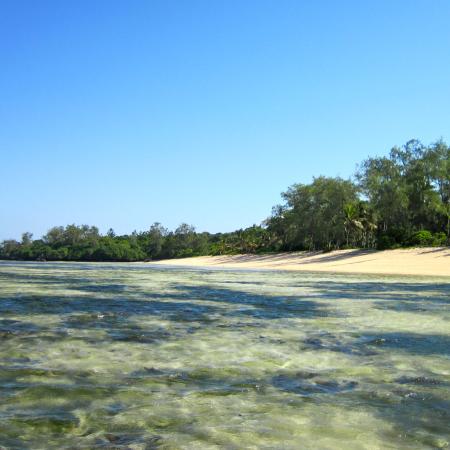
A lo largo y ancho de la costa de Kenia se observa un notable aumento de las comunidades que empiezan a pensar de forma diferente sobre los recursos marinos de los que dependen. Una nueva generación de pescadores busca formas de gestionar responsablemente sus recursos para asegurar no sólo su propio futuro, sino el de otros. Durante generaciones, los pescadores de toda la costa keniana han podido llevar comida a la mesa y vivir de la pesca. Sin embargo, llegó un momento en que el tamaño de los peces y el número de capturas empezaron a reducirse hasta un punto en que ya no podían vivir de esta manera. En muy poco tiempo, los pescadores se enfrentaron al colapso del único medio de vida que conocían. Esta crisis de combustión lenta centró la atención en un examen más detenido de las cuestiones que afectaban a lo que se desembarcaba en sus redes y, en la mayoría de los casos, a lo que no. Nunca nos cuestionamos cómo vivíamos. Nuestros padres y abuelos eran pescadores y, en nuestro pueblo, era el único camino que conocíamos. Cuando nuestras redes empezaron a fallar, nos enfrentamos a un futuro desconocido'. Dickson Juma, pescador. El principal factor identificado fue la superpoblación de la zona, que provocó la sobrepesca. Se creó un organismo comunitario, la Kuruwitu Conservation and Welfare Association (KCWA), para garantizar que la comunidad tuviera voz en la gestión de los recursos de los que dependía. Con la ayuda de socios estratégicos, se crearon marcos institucionales y estructuras jurídicas. Tras una consulta en profundidad, en 2006 la Asociación votó a favor de cerrar parte de la zona de la laguna a un área marina protegida. El rejuvenecimiento de las poblaciones de peces de la zona fue visible rápidamente, y las capturas de los pescadores de los alrededores empezaron a aumentar. La financiación ayudó a KCWA a crear las correspondientes empresas alternativas generadoras de ingresos, formando a los pescadores y sus familias en otras profesiones y creando empleo para aliviar la presión sobre el frágil medio marino. Quince años después, el goteo de visitantes es modesto pero constante, y están encantados de pagar por bucear con tubo en esta zona marina protegida, sana y dinámica. En 2017, la KCWA fue la orgullosa ganadora del Premio Ecuatorial del PNUD, concedido para reconocer los esfuerzos destacados de las comunidades para reducir la pobreza mediante la conservación y el uso sostenible de la biodiversidad. El reconocimiento del duro trabajo y el sacrificio de la comunidad por un objetivo común más amplio ha sido un hito importante en el desarrollo del proyecto.


